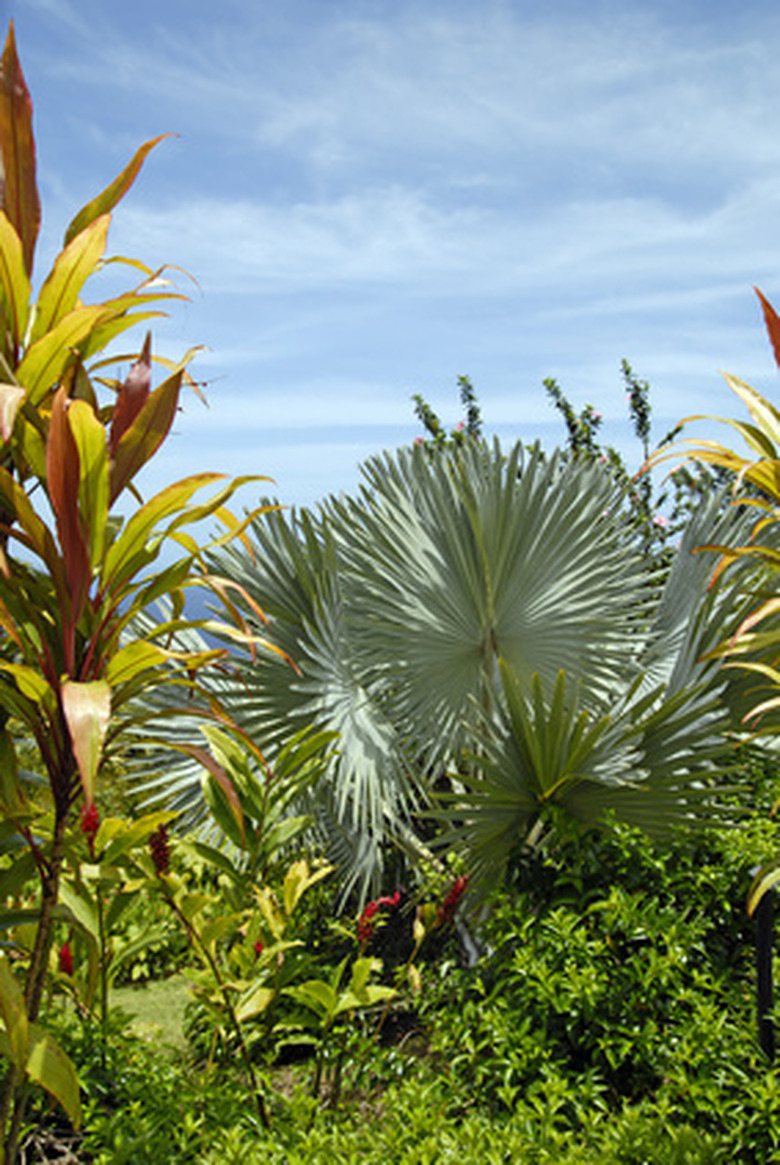Hawaii Low-Maintenance Landscaping Ideas
Hawaii's climate is one of the warmest in the United States, encompassing USDA hardiness zones 10A through 11, according to the U.S. National Arboretum. This presents specific challenges for the landscaper who wants to limit her time spent creating a lush, green backyard. Various planting and management strategies, like using native Hawaiian plants and mulch, can reduce maintenance costs and time so you can spend more of the day enjoying your landscaping than tending to it.
Native Hawaiian Plants
Hawaii's climate creates inhospitable growing environments for many popular ornamental shrubs and flowers from the mainland. Don't struggle with excessive management practices like extra watering or fertilization to keep such plants alive. Instead, grow native Hawaiian plants for a low-maintenance landscape. These flowers, vines and shrubs are well-adapted to the state's geography and climate, require little maintenance once established and are drought-resistant, according to the University of Hawaii. The various nurseries associated with the Landscape Industry Council of Hawaii sell the plants throughout the islands.
- Hawaii's climate is one of the warmest in the United States, encompassing USDA hardiness zones 10A through 11, according to the U.S. National Arboretum.
- Various planting and management strategies, like using native Hawaiian plants and mulch, can reduce maintenance costs and time so you can spend more of the day enjoying your landscaping than tending to it.
Mulch
Hawaiian landscapes typically require frequent irrigation because Hawaii's year-round sun and warmth causes greater moisture loss from the soil than in landscapes in cooler climates. Mulch reduces moisture loss, helping to conserve water, lower water utility bills and reduce the time spent tending the garden. It can also help condition the soil and can serve as a decorative feature along pathways and buildings for zero-maintenance borders. Mulching materials in Hawaii include wood chips, crushed lava rock and shredded coconut husks. Pile the mulch 2 to 4 inches thick for adequate moisture protection and weed blockage.
Lawns
Attempting to grow cool-season turfgrass like ryegrass will only require hours of maintenance and tending. Landscapers should opt for a drought-resistant, warm-season grass species for a lower maintenance yard. Common Hawaii turfgrass species include Bermuda grass (Cynodon dactylon), centipede grass (Eremochloa ophiuroides) and zoysia grass (Zoysia spp.).
- Hawaiian landscapes typically require frequent irrigation because Hawaii's year-round sun and warmth causes greater moisture loss from the soil than in landscapes in cooler climates.
- Attempting to grow cool-season turfgrass like ryegrass will only require hours of maintenance and tending.
Groundcovers
Groundcovers traditionally require less watering and little-to-no mowing compared to even the hardiest lawn. Landscapers should opt for groundcovers in areas where turfgrass isn't needed. Groundcovers that do well in Hawaii include the wedelia (Wedelia spp.), the ilima papa (Sida fallax) and the akia (Wikstroemia uva-ursi), according to the University of Hawaii.
References
- "Taylor's Master Guide to Landscaping"; Rita Buchanan; 2000
- University of Hawaii: Native Hawaiian Plants for Landscaping, Conservation and Reforestation
- University of Hawaii: Guidelines for Professional Turf and Groundcover Management
